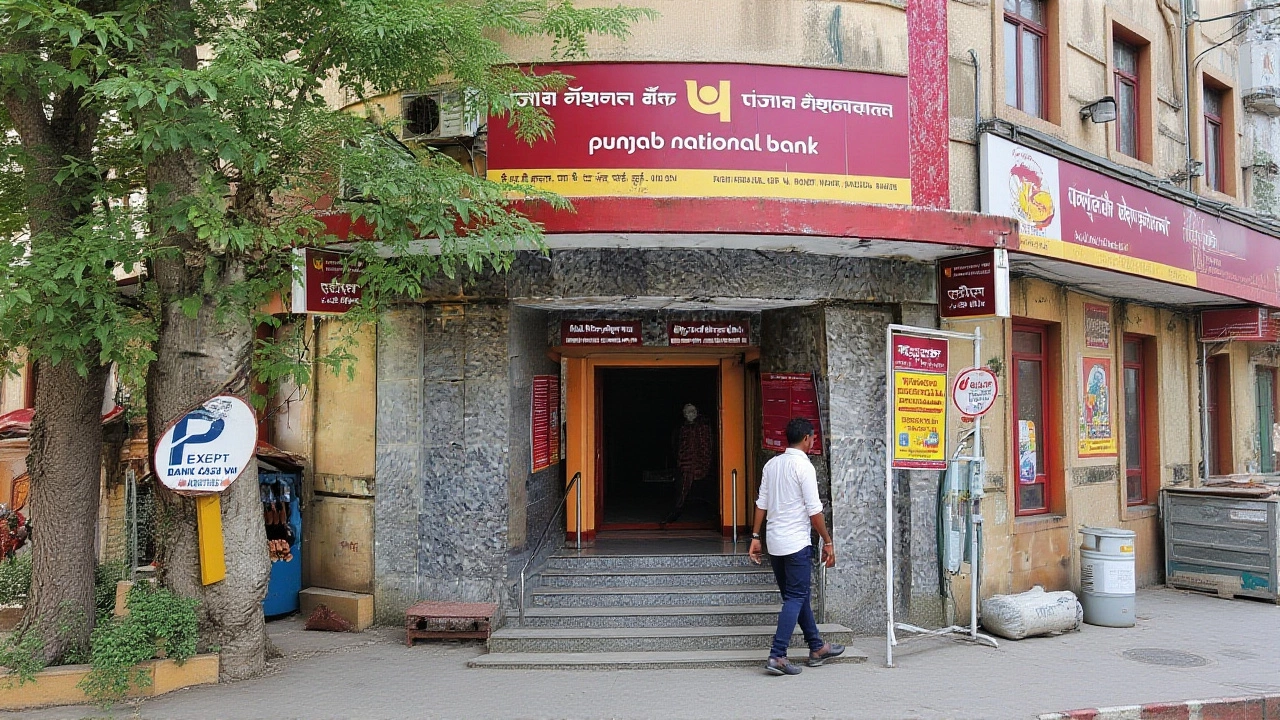When Reserve Bank of India (RBI) announced an bank holiday for Thursday, 2 October 2025, the nation’s entire banking network shut its doors – from the bustling branches in Delhi to the tiny talukas of Bihar. The closure was triggered by a rare calendar coincidence: Mahatma Gandhi’s birth‑celebration, Gandhi JayantiIndia, fell on the same day as the Hindu festival of DussehraIndia. The decision meant that every public‑sector bank, private‑sector bank, cooperative, rural and local area bank across the country remained closed.
Calendar Overview and Nationwide Schedule
The RBI’s annual holiday calendar, published each December, dictates not only national gazetted holidays but also monthly Saturday closures and state‑specific festivals. For October 2025 the schedule looked like this:
- 1 Oct (Wed) – Half‑Yearly account closing
- 2 Oct (Thu) – Bank holiday for Gandhi Jayanti & Dussehra
- 5 Oct (Sun) – Regular Sunday closure
- 11 Oct (Sat) – Mandatory second‑Saturday shutdown
- 20 Oct (Mon) – Diwali (Deepavali)
- 22 Oct (Wed) – Govardhan Puja (regional)
- 25 Oct (Sat) – Fourth‑Saturday closure
- 28 Oct (Tue) – Chhath Puja (regional)
- 31 Oct (Fri) – Sardar Vallabhbhai Patel Jayanti (Gujarat)
Each of these dates forces banks to suspend in‑person services – from cash withdrawals to cheque clearances – while digital channels stay live.
Cultural Significance of the Coinciding Holidays
Gandhi Jayanti, a gazetted national holiday, commemorates the birth of the father of the Indian independence movement. It’s marked by prayer meetings, tributes at the Raj Ghat and school programmes nationwide. Dussehra, on the other hand, celebrates the mythic triumph of Lord Rama over the demon king Ravana, culminating in massive processions, effigy burnings and fireworks.
Having both on the same day is unusual; the last overlap occurred in 2004, when a similar conjunction led RBI to issue a special advisory. Shaktikanta Das, Governor of the RBI, explained, “When two major observances align, we must balance fiscal continuity with respect for our cultural fabric.”
For many citizens, the joint holiday feels symbolic – a reminder that the nation’s secular ethos can sit alongside deep religious traditions.
Impact on Customers and the Rise of Digital Banking
Across the country, millions of account‑holders woke up to “Branch Closed” signs. In metropolitan hubs, queues that would normally stretch for hours vanished overnight. “My payroll cheque was due on the 2nd, and I had to wait until the 3rd for clearance,” complained Ramesh Patel, a small‑business owner in Vadodara.
Yet the disruption was far less severe for those who had already migrated to online platforms. A recent RBI report noted that 68 % of retail transactions in India now occur digitally, a figure that jumped to 73 % during holiday periods.
"Our mobile app handled over 12 million login attempts on the holiday, and fund‑transfer volumes rose by 22 % compared with a typical weekday," said Anita Mehta, Head of Digital Services at State Bank of India. She added that features like UPI, IMPS and NEFT operate 24/7, ensuring that even when doors are shut, money keeps moving.
Still, not every service is available. Cheque clearing, cash deposits at vaults and physical grievance redressal require a branch. Rural customers, where internet penetration lags, felt the pinch more acutely.

Regional Variations and State‑Specific Closures
Beyond the national holidays, RBI’s calendar respects a mosaic of local festivals. For example, Bihar, Jharkhand, Chhattisgarh and parts of Odisha observe Chhath Puja, leading to a separate bank shutdown on 27 Oct (Sunday) and an additional closure on 28 Oct (Monday) for Bihar alone.
In the south, Maha Navami on 1 Oct affected banks in Karnataka, Kerala, Tamil Nadu and parts of Odisha. Gujarat, Rajasthan, Sikkim and Uttar Pradesh closed on 23 Oct for Bhai Dooj, while Manipur observed Ningol Chakkouba on 24 Oct.
These staggered holidays mean that a bank’s regional branches may be open while its head office remains closed, complicating internal workflows. "We run a centralized clearing system, so even if a branch in Kolkata is open, transactions routed through the Mumbai hub pause until the next working day," noted Vikram Singh, Operations Manager at HDFC Bank.
Future Outlook: Balancing Tradition and Banking Efficiency
Looking ahead, the RBI is exploring flexible scheduling for low‑traffic holidays, possibly allowing limited “essential services” counters to stay operational in critical regions.
Experts also suggest that expanding digital literacy in Tier‑2 and Tier‑3 cities will reduce reliance on physical branches during festive periods. "If more people can file grievances or request cheque books online, the need for full‑day branch closures diminishes," said Dr. Neha Rao, a fintech researcher at the Indian Institute of Management, Bangalore.
For now, the October 2 alignment serves as a vivid reminder: India’s banking system must constantly adapt to the country’s rich cultural calendar while keeping the wheels of finance turning.
Frequently Asked Questions
Why were banks closed on October 2, 2025?
The Reserve Bank of India designated the day a national bank holiday because it coincided with both Gandhi Jayanti, a gazetted holiday, and Dussehra, a major Hindu festival. The overlap meant that all banking institutions had to observe the closure.
Which customers were most affected by the holiday?
Rural and semi‑urban customers relying on cash deposits, cheque clearance and in‑person grievance handling felt the impact most. Urban users with internet access could continue digital transactions without interruption.
Did the holiday affect digital banking services?
No. Services such as UPI, NEFT, IMPS, mobile banking apps and internet banking remained fully operational, allowing users to transfer funds, pay bills and manage accounts despite branch closures.
How often does such a double holiday occur?
The last time Gandhi Jayanti and Dussehra fell on the same date was in 2004. Because the Hindu lunar calendar shifts each year, such overlaps are rare, happening roughly once every two decades.
What are the RBI’s plans for future holiday scheduling?
The RBI is reviewing the possibility of keeping essential service counters open during low‑traffic holidays and is pushing for greater digital adoption to lessen the disruption caused by branch closures.





